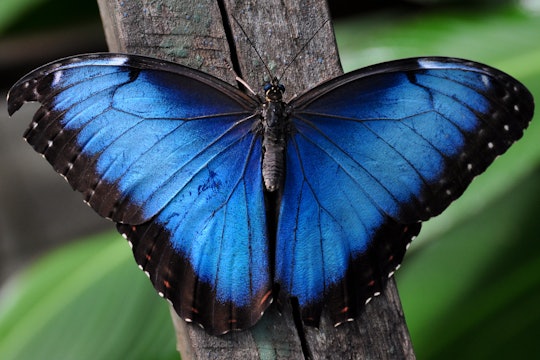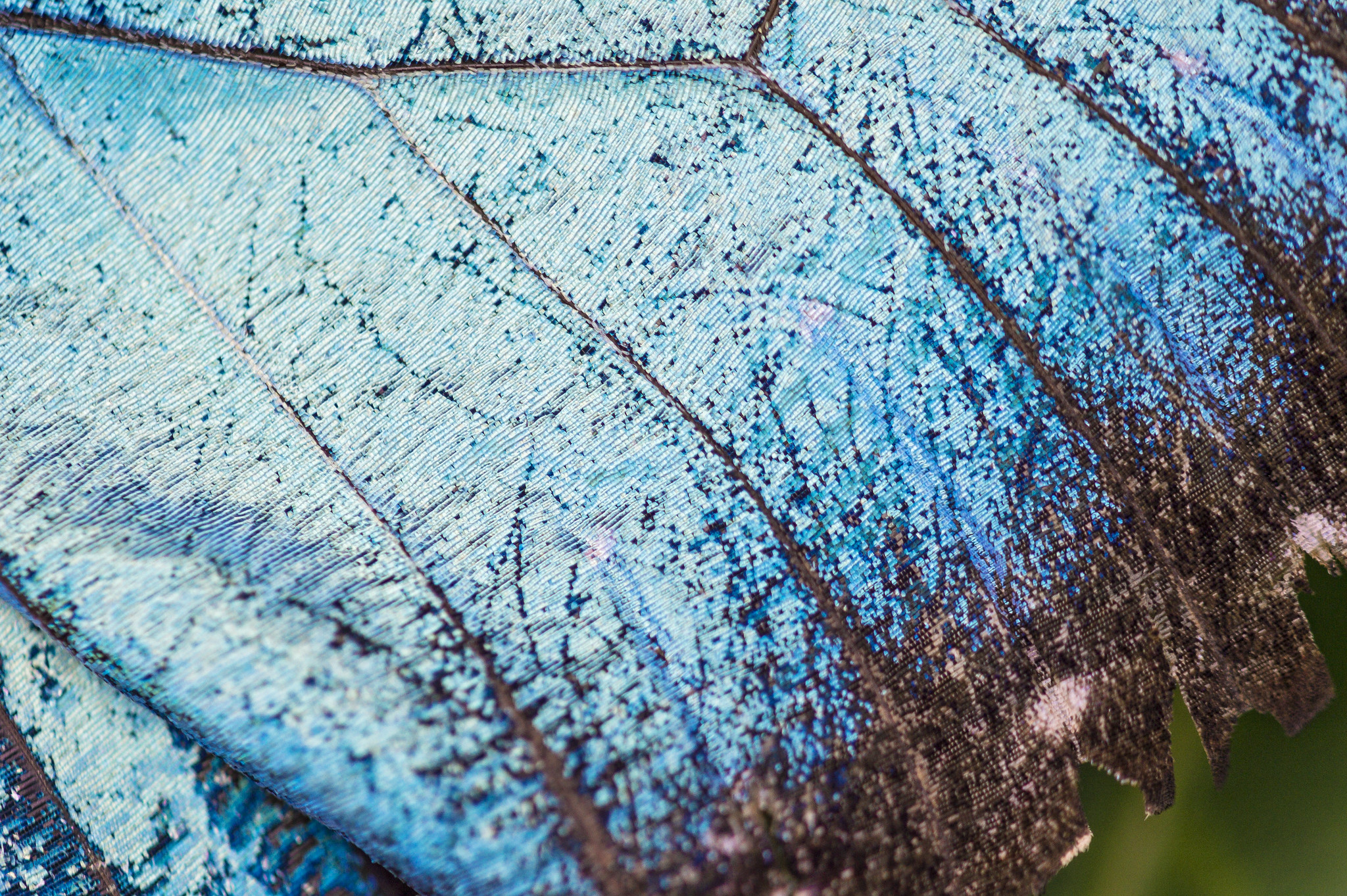
Via Wikimedia
A butterfly's wings are the perfect mold to grow neurons on
Butterfly wings provide the right topography for nerve cells to grow, with an aim towards ameliorating hearing loss
Around 15% of American adults report some trouble hearing. That is about 37.5 million people who may need hearing aids for the majority of their lives. A common cause of hearing loss stems from special cells called spinal ganglion neurons (SGN) that transmit signals from hair cells in the ear to the brain. In these cases, regenerating SGN in the inner ear is our best bet to restore hearing. However, controlling how and where nerve cells grow is notoriously difficult. Fortunately, our dependence on hearing aids may soon wind down thanks to the beautiful blue morpho butterfly.
When nerve cells grow on a surface, they respond to physical features such as bumps and grooves. They also communicate with neighboring nerve cells through electrical signals. So, a good growth surface for nerve cells must provide topological cues and be electrically conductive.
The blue morpho butterfly wing has an intricate structure consisting of parallel ridges. Turns out these ridges are perfect templates for cell growth. Engineering an equivalent surface with ridges that is flexible yet light is impossible with today's technology. Rendering a butterfly wing biocompatible on the other hand, is possible. This is what inspired scientists to consider growing cells directly on butterfly wings. In 2019, cardiac tissue assembled on blue morpho – carbon nanotube composites was shown to recover its beating ability. In that case, the elastic composite wing mimicked the cyclic contractions of cardiac cells and shifted colors. By simply observing color changes, they could assess if the cells were behaving as expected.
For nerve cells, which are long, could the parallel ridges on the wing also align neurons end-to-end and make them grow in one direction? This is what Renjie Chai and team at Nanjing University sought to find out, as directionally controlled regeneration of auditory nerve cells is critical to restore hearing. Through a collaborative effort involving university researchers and surgeons, they transferred a thin layer of super aligned carbon nanotubes onto the wing of a blue morpho butterfly to make it conductive. Not only was the conducting composite wing excellent at orienting nerve cells as they grew, it facilitated maturation of neuronal junctions, which is the site where nerve cells transmit electrical signals.

A close-up view of the veins and details of a blue morpho butterfly's wings
Tambako the Jaguar via Flickr
Interestingly, nerve cells grow on both plain butterfly wing and aligned carbon nanotubes. However, only when the two are combined do the cells grow in a specific direction and the neuronal junctions mature. Super aligned carbon nanotubes are special in that they are simply individual nanotubes connected end-to-end. This makes a sheet of this material extremely conductive along one direction – the direction in which the nanotubes are aligned. When these aligned nanotubes are transferred onto butterfly wings, the composite retains the parallel ridges of the wing below while acquiring high conductivity along the ridges thanks to the nanotubes. Further, being extremely thin and lightweight, they hardly add any heft to the wing structure.
Nerve cells have what's called a "growth cone," which is a protein supported structure that explores the environment, determines the direction of growth, and guides the nerve fiber to extend in that direction. Turns out that in the case of nerve cells grown on the composite wing, growth cones aligned along the grooves. Considering the fact that nerve cells grew on butterfly wings as is, this goes to show that these grooves are features that nerve cells readily sense and respond to as they grow. Even with aligned carbon nanotubes, the composite surface retained the ridged butterfly wing structure. Nerve cells could sense the grooves on the composite wing surface and orient within them, just like they would on the unmodified butterfly wing.
More importantly, the growth cone filopodia, which are antennas for nerve cells to probe the environment, was much longer for nerve cells that grew on the composite wing. This is important as longer filopodia is a sign of improved communication between nerve cells. Moreover, the density of neuronal junctions, also called synapses, was much higher. The orientation within ridges, long filopodia, and high density of synapses clearly show that nerve cells can be controllably cultured on conductive butterfly wings. As promising as these results are, the SGN used in this study was sourced from mice. So any hearing restorative treatment for humans based on this approach is still years away.
From a materials perspective, the structure of the blue morpho butterfly wing is decades ahead of any microfabrication process available today. As such, this study is a classic example of how borrowing ideas from seemingly unlikely sources in nature can yield incredible results. So the next time you see a butterfly, remember those pretty wings could be our gateway to perfect hearing.
